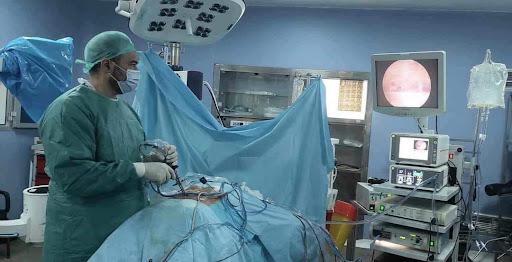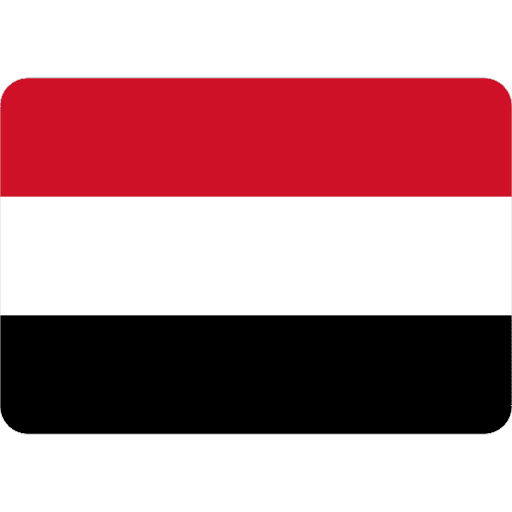Technology in healthcare is revolutionizing the treatment of diseases.

Healthcare has witnessed a real technological revolution in recent years; modern technology has become an essential partner in diagnosing and treating diseases more accurately and effectively.
Pioneering technological innovations have opened new horizons in the medical field, bringing about a qualitative shift in improving human health and well-being. The following are the most prominent developments resulting from the use of technology in healthcare and disease treatment.
Using advanced medical devices
Medical devices are essential elements for achieving the highest levels of healthcare for patients; they play a pivotal role in diagnosis, treatment, and medical follow-up. Without these devices, it would be difficult to perform some common medical procedures; whether simple or complex; such as implanting artificial organs and surgical interventions.
Medical devices are used in various places; ordinary people use simple devices at home; such as blood pressure or sugar testing devices, and doctors and nurses use the most advanced devices in clinics, medical centers, and hospitals for various purposes; Such as prevention, screening and diagnosis, assisting people with disabilities, monitoring treatments, and treating both acute and chronic diseases.
The World Health Organization estimates that there are more than two million different types of medical devices in the global markets, classified into more than 22,000 groups. This great diversity reflects the rapid development of these technologies and modern medical innovations, and the strong entry of technology into the world of medicine.
Recent technological developments in the field of medicine have greatly contributed to improving the ability of doctors to diagnose diseases with extreme accuracy; as advanced devices and programs have made it possible to access more accurate and clear diagnoses, which has reduced the need for surgical operations in many cases, and thus the diagnosis process has become faster and more comfortable for patients.
For example, X-rays are used to diagnose bone fractures, while computed tomography devices are used to diagnose bone fractures. To detect tumors and foreign tissues in the human body, and in other cases, an endoscope is used; it is a tiny camera that is inserted into the body through the mouth; to detect problems in the digestive system and other vital organs.
Robotic Surgery
Robotic surgery is one of the latest advanced medical technologies that has witnessed remarkable progress in recent years; after it was used only in specific cases, it has become more common and widespread in the field of medical surgeries.
Although when the concept of surgery comes to mind, it often imagines an operating room with a group of surgeons and nurses, modern technology has made it possible to perform surgeries with the least possible direct human intervention; by adopting robotic surgery; which is a local surgery characterized by its high accuracy and its ability to reduce the risk of infection in patients.
However, robotic surgery does not mean the complete absence of human intervention; as the presence of a qualified medical staff is still necessary; To operate these advanced machines and perform operations with high skill.
Wearable devices
Wearable device technologies have witnessed rapid development recently; they have become a valuable addition to electronic patient records in the field of collecting health data; as they contribute to increasing prevention, reducing health risks, and improving health outcomes for individuals, noting that in the beginning they were limited to limited devices, such as: smart watches and fitness trackers, but now, there are many types of devices available that are used for various purposes.
One of the most prominent advantages of wearable devices is their ability to alert users and their doctors directly of any urgent health problems; as these devices bring health data in real time; to be collected by specialized systems and analyzed, which allows doctors to discover any health problems that their patients may suffer from.
With this technology, doctors can take proactive measures and communicate with patients who may need urgent medical care, even before they realize there is a health problem. An example of this is the ADAMM device, which is specifically designed for asthma patients; it is a device linked to an application that can alert users and doctors before an asthma attack or any other emergency occurs.
Telemedicine
Telemedicine is a term that refers to providing healthcare to patients using modern and advanced communication technologies; by transferring medical information electronically; whether by video, audio, or written texts between the patient and the doctor or medical team.
Telemedicine provides several advantages, most notably the ability to access healthcare for patients who live in remote or rural areas far from medical centers, and helping to reduce the need for travel and movement, which saves time, effort and expenses for patients.
Psychological Care
Mental health is a state of psychological and mental well-being that enables a person to cope with normal life challenges, work productively, and realize their potential. Common mental disorders include depression, anxiety, post-traumatic stress disorder, and others.
Modern technologies play an increasingly important role in treating such conditions; for example, virtual reality is used in exposure therapy; the patient is gradually exposed to situations that cause him anxiety or fear in a safe and guided environment, which helps him overcome his fears and build psychological immunity.
Telemedicine applications contribute to providing psychological support to patients by enabling them to communicate with psychological specialists online, thus avoiding waiting for in-person appointments, which can sometimes be difficult. Thanks to these new technologies, psychological and mental health care has become easier and more effective, which helps patients recover quickly and better.
Artificial Intelligence
Artificial Intelligence (AI) plays a pivotal role in accelerating the process of diagnosing diseases. Doctors use it to read and interpret medical images, such as X-rays, MRIs, and CT scans, faster and more accurately. AI algorithms can detect patterns and details that the human mind may not be able to detect, leading to a more reliable diagnosis.
In addition, AI can analyze patient data, including medical history, symptoms, lab results, and diagnostic tests, and use that information to predict the most likely diagnosis, helping doctors make more informed decisions about diagnosis and treatment.
AI can help diagnose complex conditions, such as chronic diseases and cancers. By analyzing the complex interactions between genetic, environmental, lifestyle, and other relevant variables, it is worth noting that artificial intelligence does not replace doctors, but rather complements their role; it provides an additional tool to help them make more accurate decisions and improve the quality of healthcare provided to patients.
Developing methods for conducting medical experiments
Technology has revolutionized the field of medical experiments; it has greatly reduced the time required to conduct them; while experiments in the past took several years, they can now be completed in a few months or weeks, and has provided scientists with powerful and advanced tools to study drug interactions with the human body more accurately and safely, in addition to accelerating the process of developing new treatments and medicines.
This great progress is due to the ability to simulate the human body's reactions to different drugs; Using advanced technologies instead of relying entirely on human volunteers who may be exposed to great risks, scientists can now study drug interactions with the human body with extreme precision without compromising people's safety.
Technology has also proven effective in finding quick solutions in health emergencies; for example, during the outbreak of the dangerous Ebola virus disease, scientists thought of innovative ways to speed up the vaccine development process; for fear of the epidemic spreading globally, and indeed they succeeded in producing the Ebola vaccine in record time, which helped contain the virus and limit its spread.
Providing a huge amount of information and medical resources
In recent years, the world has witnessed a real revolution in the field of providing medical information and resources; thanks to rapid technological developments and the widespread use of the Internet, medical knowledge is no longer limited to a limited group, but has become easily and conveniently available to everyone.
Every individual, whether ordinary or professional, has easy access to a wealth of reliable medical information, including specialized scientific studies, up-to-date treatment guidelines, and leading research data in various medical fields. This massive flow of knowledge helps patients gain a deeper understanding of their health conditions and available treatment options, and enables them to make sound decisions about their healthcare.
As for doctors and healthcare professionals, the availability of accurate and up-to-date medical information enhances their diagnostic and therapeutic skills and capabilities, helps them keep up with the latest developments in their field, and enables them to communicate effectively with their peers from experts around the world, and exchange opinions and experiences on complex cases, ensuring the best medical practices for patients.
Moreover, modern communication technologies in the health field have been able to remove geographical barriers and facilitate communication between patients and doctors globally, enabling patients to obtain specialized medical advice from anywhere in the world without the need to travel or incur exorbitant expenses.
Facilitating access to patients' medical records
The process of collecting patient data is one of the most important aspects in the field of health care; as it enables doctors to accurately assess patients' conditions, diagnose health problems correctly, and then make the appropriate decision regarding treatment, noting that patient records in the past were accumulated in the form of huge amounts of papers, which made the process of accessing and searching them a difficult and arduous task.
However, with the tremendous technological development currently taking place, the electronic medical records system has been developed that allows the storage of all patients' health data in a secure digital way, and this modern system has provided many advantages to health sector workers and patients; It has facilitated the collection, storage, and retrieval of patients' medical data with high efficiency and speed, which has contributed to improving the quality of services provided to patients and increasing their effectiveness.
In conclusion, it can be said that technology has become an indispensable partner in the journey of human health care; as it provides advanced tools and methods in combating diseases and maintaining a better life, and with the continuation of scientific research and technical development, more pioneering medical achievements will be achieved that will change people's lives for the better in all fields from demand to education and reaching technology in space.
References
[1] who.in, Health technologies
[2] builtin.com, Healthcare Technology
[3] ehs.gov.ae, Robotics in Healthcare
[4] onlinedegrees.sandiego.edu, 10 Technologies That Are Changing Health Care
[5] ncbi.nlm.nih.gov, Perspective of Artificial Intelligence in Disease Diagnosis: A Review of Current and Future Endeavors in the Medical Field
Source: Sharjah 24, adapted


